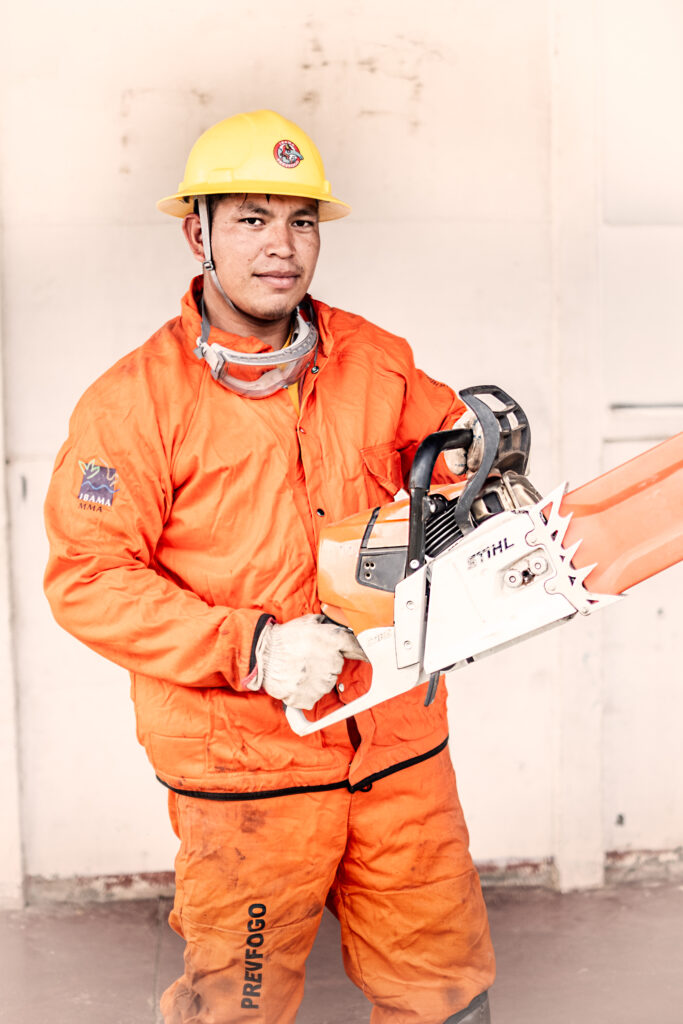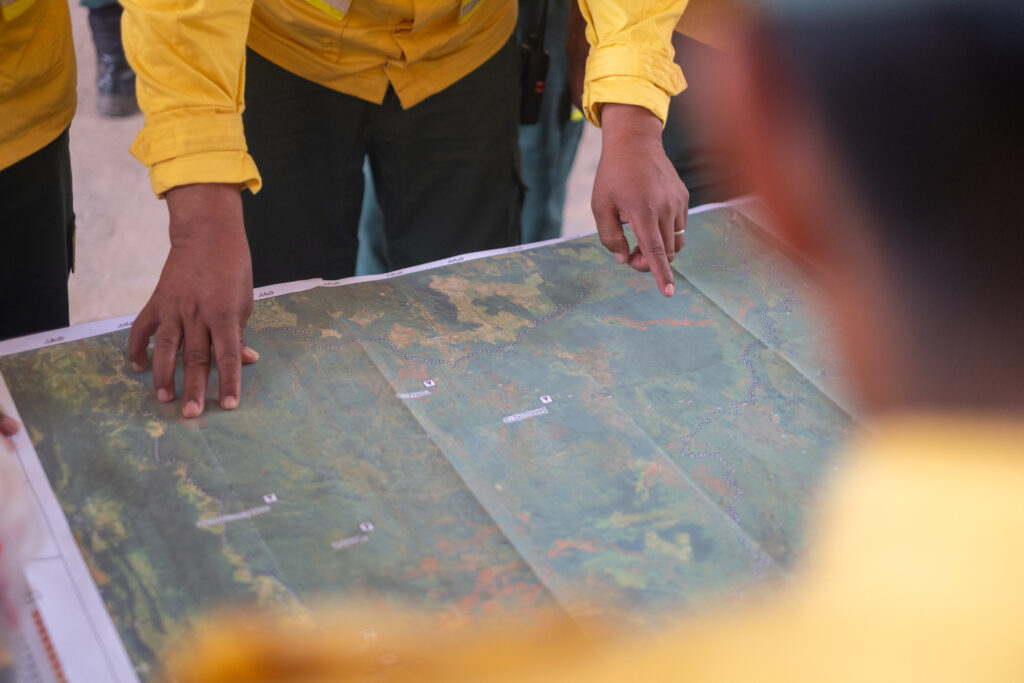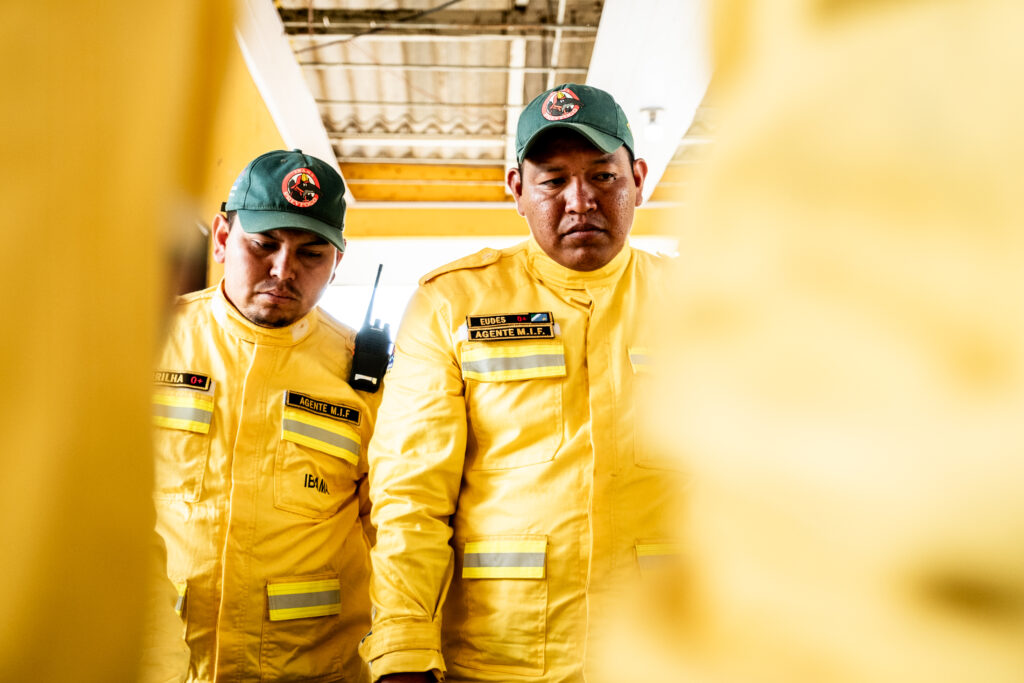
Kadiweu Indigenous Fire Brigade – Guardians of a Burning Pantanal
By Joeri Borst
Silvo Xavier
“We were guarding the place where the fire was coming from. And when we realized the fire had already jumped ahead, we were trapped. But with the help of our equipment, we managed to get out. Everything that happened in that place scared me.” – Silvo Xavier, Brigade Chief of Fire Brigade 1
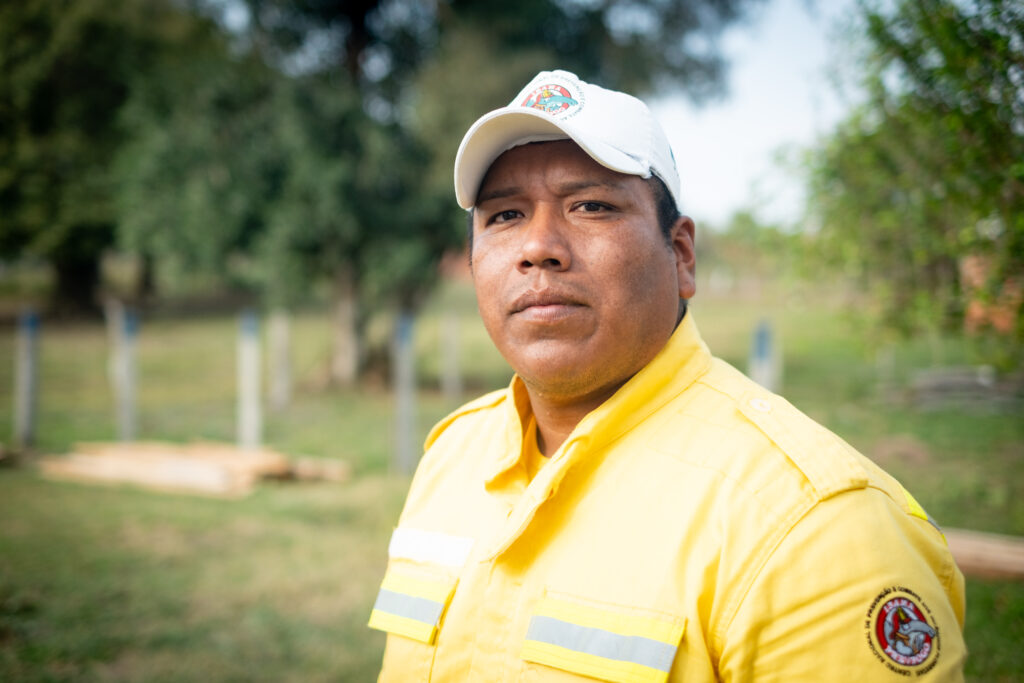
A Land Between Water and Fire
In the remote southwest of Brazil lies the Kadiweu Indigenous Territory. Spanning 538,000 hectares, this land is home to 1,400 people, whose ancestors have lived here for centuries, navigating the rhythms of flood and drought that define the Pantanal, the world’s largest tropical wetland.
During the rainy season, rivers swell and the landscape transforms into a shimmering mosaic of lagoons, forest islands, and grassy plains. But when the rains end, the Pantanal dries fast. Cracked earth replaces flooded meadows, and the lush vegetation becomes brittle. In recent years, longer dry seasons and rising temperatures, driven by climate change, have turned this once predictable cycle into something far more dangerous.
Every year, fires – often started far outside Indigenous lands – ride the dry winds into Kadiweu territory. What begins as distant plumes can quickly become walls of flame, devouring everything in their path.
Eudes de Souza
“Our territory is very large, with difficult access. Many times, we leave the vehicle and walk 10 to 15 kilometres to reach the fire hotspot. “ – Eudes de Souza, Brigade Chief and Kasigi (Indigenous leader) of Tomázia
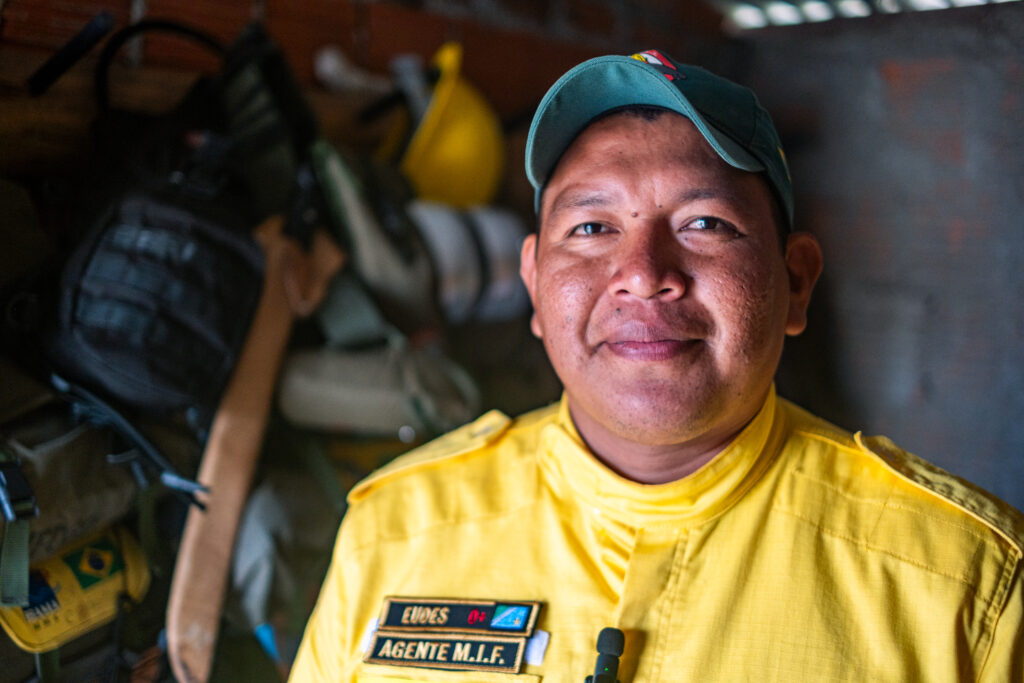
Tomázia’s firefighters
A slideshow with 7 images
The slider is set to loop infinitely.
At the heart of the Kadiweu territory lies Tomázia, a small village that is home to Fire Brigade 3. When the 2024 fires roared through the Pantanal, Tomázia became a base camp for more than 40 firefighters from surrounding brigades. They slept in tents, shared food, and worked around the clock. But there was a catch: there were no proper facilities. No toilets, no showers, no water supply. The local school stepped in to help, opening its doors to provide the basics.
That experience became a turning point. With new funding supported by Wetlands International and Cycling 4 Climate, the brigade built storage sheds for equipment, and construction began on sanitation and water infrastructure. Today, Tomázia is better prepared. When help is needed, they can host reinforcements with dignity — a small but vital victory.

Behind the scenes, operations are coordinated from PrevFogo/IBAMA’s office in Corumbá. Using the SIFAU, a Fire Intelligence System developed by Wetlands International in collaboration with partners, that blends satellite data with on-the-ground knowledge. Representing a seamless fusion of scientific expertise and technological innovation, this system has been meticulously designed to support the rational use of fire in wetland regions. It helps determine where the brigades should go next, a crucial tool when every minute counts.
Thainan Bornato
“I live in Corumbá, the capital of the Pantanal, in a house facing the Paraguay River. From there, we witnessed the wildfires along with soot storms that often covered our home. We couldn’t wash clothes or even breathe properly. In 2024, we watched helicopters scoop water from the river to fight the fires, but even with all the efforts, we felt powerless against their scale. The months of gray skies were devastating. I’ll never forget the shock of seeing blue sky again after the first rain. These are experiences we never want to relive in the Pantanal.” –
Thainan Bornato, coordinator for PrevFogo/IBAMA

Ancient Knowledge, Modern Challenges
In April 2025, the brigade took part in a “culture of fire” workshop led by Prevfogo/IBAMA. This wasn’t a typical training session, it was a meeting of traditional knowledge and modern fire science.
Community members gathered to map out areas for prescribed burns, a practice Indigenous peoples have used for generations to manage vegetation and prevent larger wildfires. In September, they returned to compare those maps with satellite images, overlaying spoken maps (ETNO methodology) with digital data. Together, they discussed what worked, what didn’t, and why.
These conversations were frank and deeply rooted in lived experience. They weren’t just about fire prevention, they were about reclaiming agency over how the land is cared for, and how future generations will inherit it.
A slideshow with 3 images
The slider is set to loop infinitely.
The story of the Kadiweu Indigenous Fire Brigade is one of resilience, courage, and deep connection to the land. These firefighters are not only defending their homes — they are protecting one of the most unique ecosystems on Earth.
As the Pantanal faces longer droughts and fiercer wildfires, their work is becoming more critical than ever. With better infrastructure, smarter technology, and strong community involvement, the Kadiweu are showing that solutions to the climate crisis can grow from the ground up.
Their fight is not just for their territory. It’s for the future of the Pantanal — and for all of us.





